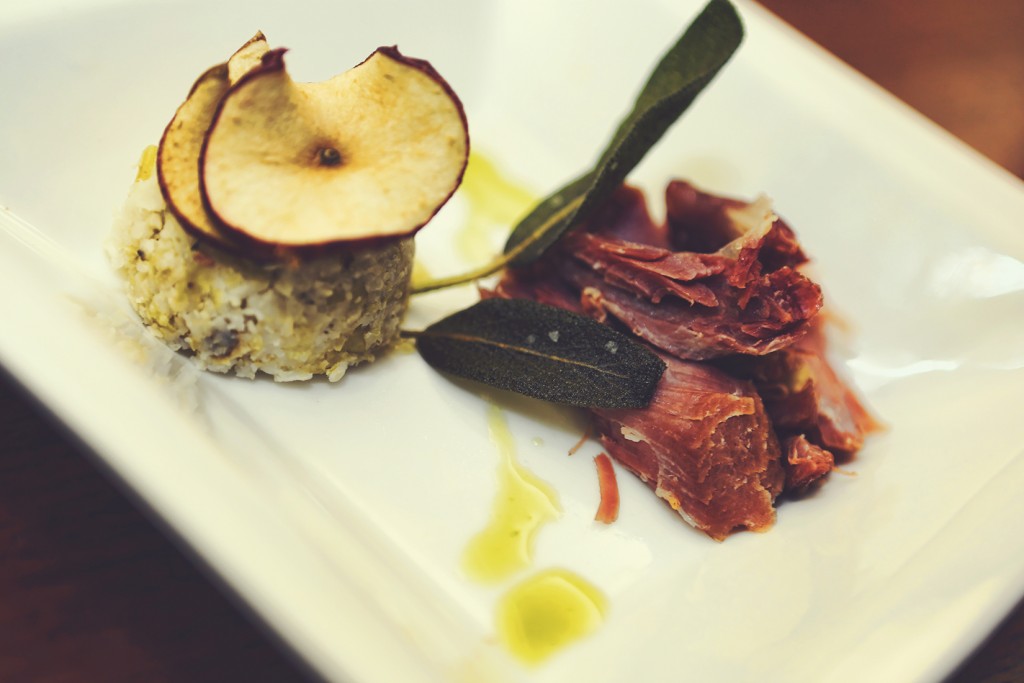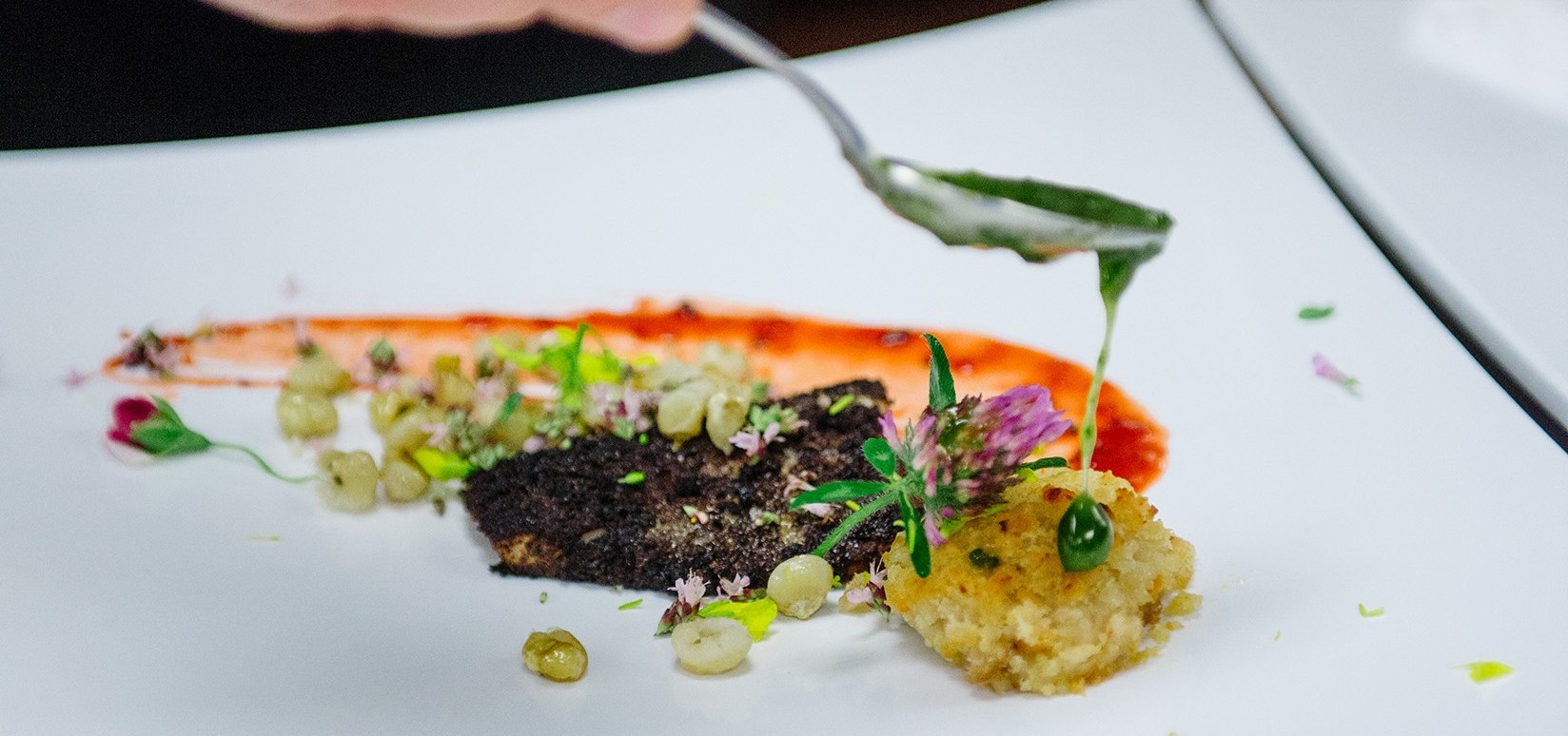Chef Sean Sherman’s job requires some patience. He’s been cooking for 27 years, but his new specialty confuses some people. “If I tell people I’m doing Native American cooking,” he says, “I get a blank stare: ‘I don’t know what that is.’”
Which makes Sherman’s job all the more necessary. In August 2014, he quit his job as an executive chef at a cafe in Minneapolis to dedicate himself fully to Native cuisine. And in September, he opened his catering business, The Sioux Chef.

Despite Minnesota’s seven Anishinaabe reservations and four Dakota communities, there isn’t a single restaurant in the state that carries on their culinary heritage by serving exclusively Native American food. At least not yet. Sherman, an Oglala Lakota tribe member, hopes to bring Native American food back into the limelight and eventually open the first Native American restaurant in the state. For Sherman, reviving Native American food is about bringing the culture back to life. “A culture without food is a lost culture,” he says. “I knew there was so much to learn — the food culture was stripped away.”
Sherman specializes in a very specific type of cuisine: “pre-reservation” Native American food. He only uses ingredients that would have been available prior to the arrival of the Europeans in the 17th century. That means no pork, no beef, no chicken, no flour, and certainly no processed sugar. Instead, Sherman — a self-described purist — combines ingredients like bison, trout, deer, red beans, squash, maple, wild rice, and pine. One of his recent plates included walleye filet with sumac and maple sugar, a white bean and smoked walleye croquette, and toasted hominy. And while Sherman says the pre-reservation diet may share similarities with the paleo or gluten-free diet trends, to him, it’s no food fad — it’s personal. “This isn’t a diet. These are the foods of my great-grandparents,” he says.
Sherman also hires people who are as eager as he is. His brand strategy manager, Dana Thompson, is a lineal descendent of the Mdewakanton Sioux, and equally passionate about Native American food. To her, The Sioux Chef is about the bigger picture, not perfectly stylized plates. “We have this mission statement where we want to reach as many people and affect as much change as possible,” she says. “We know it’s bigger than him. He’s like this vehicle to get the word out.”

Rethinking Native American Food
Sherman’s education about Native American food has been lifelong. He grew up eating it on his grandfather’s ranch on the Pine Ridge Reservation in South Dakota. But as for cooking it, Sherman is self-taught — he has no culinary school degree. Before launching The Sioux Chef, he worked as an executive chef at Common Roots Cafe in Minneapolis, where he put together American dishes using organic and locally sourced food. That experience comes in handy when Sherman thinks about Native American cooking, too.
For his ancestors, hunting and gathering were dependent on location. Fish, game, and plants differ from one region to the next. “It changes every 100 miles,” Sherman says. When pondering concepts of local sourcing and ethnobotany (studying how the Natives used indigenous plants), Sherman noticed a massive void in food culture. He began researching pre-reservation food. He read books, talked to Native elders, and bought every Native cookbook he could find. He also spent a lot of time outdoors, identifying plants and learning which ones were indigenous. “It’s like putting a pot that’s been broken back together and creating the full image,” Sherman says. “It’s not about me trying to make fancy plates. It’s about people getting to rethink the Native food systems.”
Clint Carroll, an assistant professor of American Indian studies at the University of Minnesota and a citizen of the Cherokee Nation, teaches these concepts in the classroom. Carroll’s lessons focus on environmental studies and environmental politics with an emphasis on Native American lands and communities. Carroll says the culinary arts are the core component of American Indian culture, and praises Sherman for his efforts to bring it back to the limelight. “Elevating these traditions to the level that Sean’s doing is really making a big splash,” he says. “That’s a huge thing, increasing Native visibility and raising awareness by getting people interested.” Despite Sherman’s “big splash,” Carroll says most of his non-Native students have very little knowledge of Native American history — let alone Native American food. “I think that strides are being made,” Carroll says, “but we’ve still got a long way to go.”
Education: the Ultimate Goal
That’s why Sherman’s ultimate goal is educating the community — no matter how many times he has to answer to blank stares. And while the catering business has been successful, Sherman has decided to put his catering business on the backburner to further his education goal in other ways.
Now, he’s opening a food truck in Minneapolis. He plans to eventually create what he calls a “native market scenario,” a small deli with Native American foods at accessible prices. And: “I’m working on a cookbook — looks like we just got a publisher,” he says nonchalantly.
That’s all in addition to the restaurant dream. But beyond that, Sherman hopes to open a one-of-a-kind Native American culinary center to train chefs in the cuisine of the Natives. That way, he won’t be the only guy having to explain his specialty. “I wouldn’t call myself an expert,” he says. “I’m just applying what I’ve been learning. I’m just a chef.”

